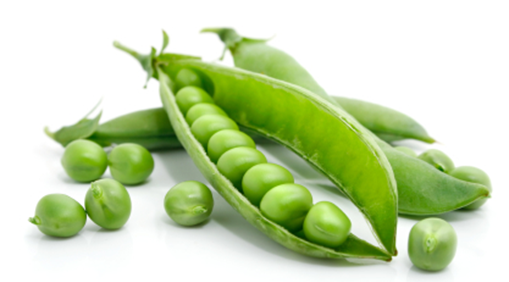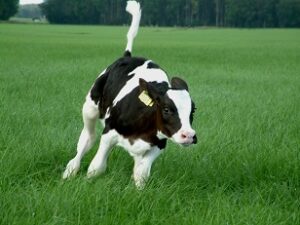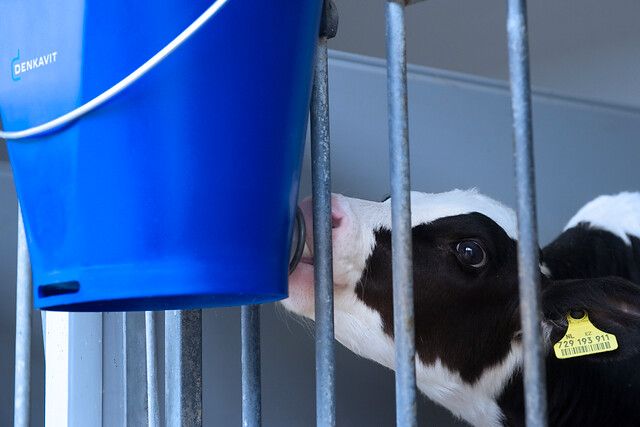Protein components in calf milk replacers
 In this article, we discuss what is actually in the calf milk replacer. Of course, the main ingredient of calf milk replacers (CMR) is… milk! Together with vegetable components, milk ingredients used to deliver the total nutrient package for the optimum growth and performance of calves. In this article, we are going to elaborate more on protein components used in calf milk replacers.
In this article, we discuss what is actually in the calf milk replacer. Of course, the main ingredient of calf milk replacers (CMR) is… milk! Together with vegetable components, milk ingredients used to deliver the total nutrient package for the optimum growth and performance of calves. In this article, we are going to elaborate more on protein components used in calf milk replacers.
Protein components sources
The composition of a CMR should always consider the needs and digestive capacity of the calf. The protein fraction should provide the necessary amino acids to make body protein so that the organs and muscles can develop. The crude protein content in most CMR is between 19 and 24%. However, this figure says little about the quality of the protein. How well the animal can use this protein depends on the digestibility, the amino acid composition and the available energy from fat and carbohydrates. The apparent digestibility of the protein in a good milk product lies above 90%. For decades, Denkavit has studied the digestibility of both dairy- and vegetable-derived raw materials for calves and lambs.
Whey components
Different products fall within the category of whey. These raw materials vary greatly in protein, ash and non-protein-nitrogen (NPN) content. Due to this large variation, knowledge about the different production processes and their effect on the animal is all the more important. Whey powder concentrate (WPC) is a very high-quality dairy raw material with an excellent amino acid profile and low NPN content. On the other hand, whey permeate, a by-product of WPC production, contains less protein and relatively more NPN. Whey permeate is also less palatable because of its higher ash content, which can be an issue when feeding young lambs and calves just after the colostrum. It is difficult to determine from a CMR label which quality of whey-type ingredient is used. Therefore more attention should be given to the acceptance and performance of the animals.
Skimmed milk powder (SMP)
Similar to WPC, SMP is a very high-quality protein raw material with excellent amino acid composition and low NPN content. Nevertheless, products of different origins and quality are also available in the SMP category. One of the most important qualities of SMP is its coagulation capacity. The main protein in SMP, casein, can only be properly digested in the duodenum after it has clotted (coagulated) in the abomasum. In this process, an enzyme called renin cuts glyco-macropeptide out of the casein molecule so that it no longer remains as in solution but precipitates out as curd. If the SMP does not curd properly in the abomasum, undigested casein enters the small intestine, increasing the risk of digestive disorders. This is especially critical during the first weeks of the animal’s life. The ability of the SMP to coagulate depends on the quality of the production process.
Vegetable protein sources
The inclusion of vegetable protein sources in CMR arose at a time when dairy products were expensive and the price of calf milk was under pressure. Proteins from vegetable sources are economically interesting and can be very sustainable. Vegetable proteins aren’t found naturally in milk so a lot of research carried out at our DenkaFarm Innovation Centre to find the right sources and prerequisites for a successful application.
Important laboratory tests such as solubility, stability and presence of anti-nutritional factors (ANF) are carried out before researching on animals. ANFs are substances in plants that protect it, for example, from insect attack, but often have a negative effect on digestion and the health of animals. Examples of ANFs are trypsin inhibitors and tannins (bitter substances). We do not want to introduce these types of substances to our young animals whose digestive systems are still very sensitive. That’s why all raw materials are intensively checked for these ANFs before they are used. In this way, we ensure that the vegetable-based raw materials used in our kinds of milk are completely safe. Once the safety of the raw material is confirmed, digestibility trials determine the biological value of the product and inclusion levels.
Wheat gluten
 Wheat protein was originally a by-product of wheat starch extraction and it contains more than 80% crude protein. It is a very safe product because it does not contain ANFs. However, there is one condition when using wheat gluten in calf milk: it should be hydrolysed. Hydrolysis is a process in which the proteins are enzymatically cut into smaller pieces, so somewhat pre-digested. If this step is not applied the raw material is poorly soluble which of course is not practical for a calf milk replacer.
Wheat protein was originally a by-product of wheat starch extraction and it contains more than 80% crude protein. It is a very safe product because it does not contain ANFs. However, there is one condition when using wheat gluten in calf milk: it should be hydrolysed. Hydrolysis is a process in which the proteins are enzymatically cut into smaller pieces, so somewhat pre-digested. If this step is not applied the raw material is poorly soluble which of course is not practical for a calf milk replacer.
Soya protein concentrate (SPC)
Soya protein concentrate is a by-product of the soyabean oil industry. There is a lot of difference in quality within the group of SPCs and selecting the right source is essential. Several ANFs are naturally occurring in soya, but luckily by means of processing these can inactivate so that the soya protein can be utilized by the young animal. Our laboratory tests every consignment of SPC as it is delivered for the presence of these ANFs to ensure that we only use the correct quality. SPC also has clear benefits because animals find its taste pleasant and the essential amino acids profile is reasonably similar to that of dairy protein, which makes the biological value of this protein high for ruminants.
Pea protein
 Pea protein is also a vegetable protein source that we process into a number of products. We use material from a special sort of pea that has been through an extra production step so that it is readily soluble, no longer contains ANFs and is easily digested by the animal. The biggest advantage of pea protein is its flavour. Kid goats in particular find it very tasty.
Pea protein is also a vegetable protein source that we process into a number of products. We use material from a special sort of pea that has been through an extra production step so that it is readily soluble, no longer contains ANFs and is easily digested by the animal. The biggest advantage of pea protein is its flavour. Kid goats in particular find it very tasty.
Quality makes the difference
As much as there are many types and qualities of dairy raw materials, the world of vegetable raw materials is probably even larger. The quality requirements and preconditions on these raw materials are more crucial than for dairy proteins. Finally, a strict quality control system as well as extensive knowledge of the correct use of the different ingredients makes the difference in the final product quality and reliability.









